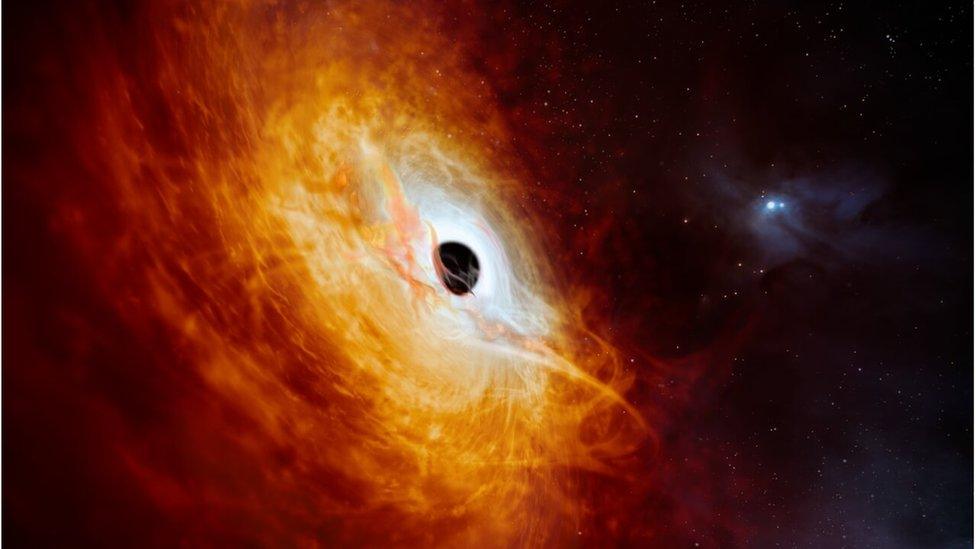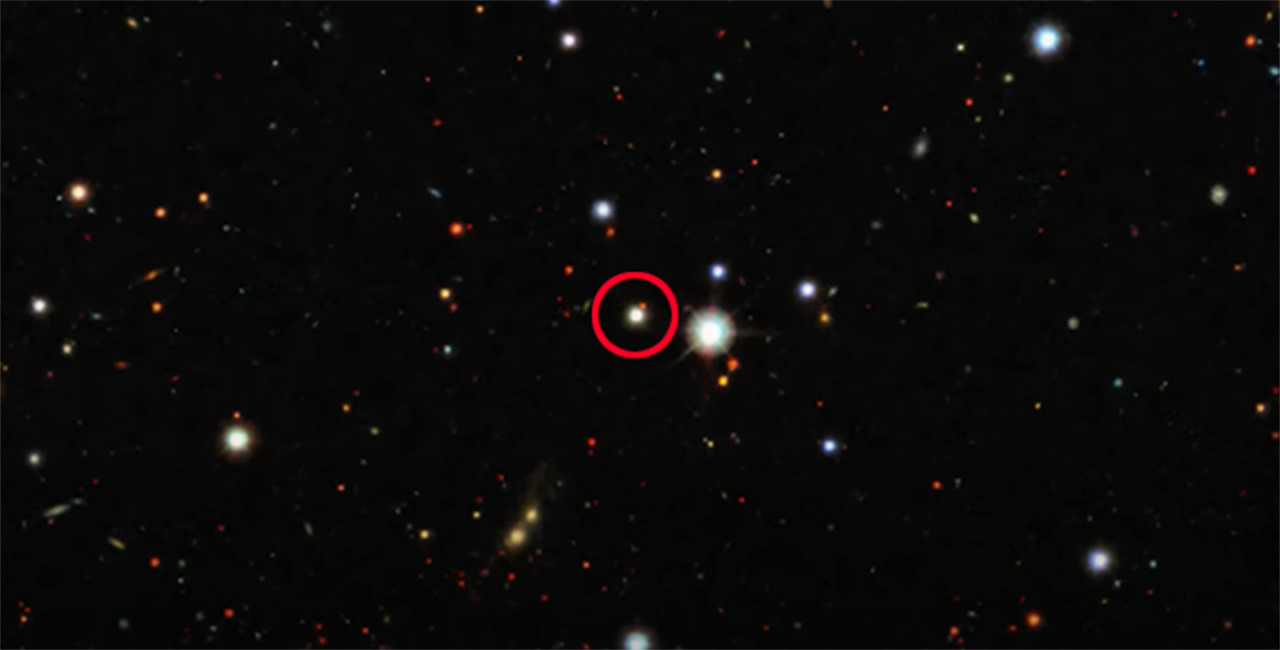Brightest and hungriest black hole ever detected
- Published

Artwork: The bright core of J0529-4351 is powered by a supermassive black hole
The most luminous object ever detected has been spied in the distant Universe.
It's a quasar - the bright core of a galaxy that is powered by a gargantuan black hole some 17 billion times the mass of our Sun.
Known as J0529-4351, the object's power was confirmed in observations by the Very Large Telescope in Chile.
Scientists, reporting in the journal Nature Astronomy, external, say the black hole has a voracious appetite, consuming the mass equivalent to one Sun every day.
J0529-4351 was actually recorded in data many years ago but its true glory has only just been recognised.
"We have discovered an object which has previously not been recognised for what it is; it's been staring into our eyes for many years because it's been glowing at its brightness for longer than humankind has probably existed. But we've now recognised it, not as being one of the many foreground stars in our Milky Way but as a very distant object," Christian Wolf, from the Australian National University (ANU), told BBC News.

J0529-4351: Studying the light from the quasar allowed astronomers to assess not just its brightness but its distance, too
The term quasar is used by astronomers to describe a particular type of AGN, or Active Galactic Nucleus. It's the very energetic core of a galaxy which is being powered by an immense black hole that's pulling matter towards itself at a prodigious rate.
As this material is accelerated around the hole, it is torn apart and emits a huge amount of light, so much so that even an object as distant as J0529-4351 is still visible to us.
This quasar's emission has taken a staggering 12 billion years to reach the detectors at the VLT, a European Southern Observatory organisation.
Everything about the object is astonishing.
"What is unusual is the rate at which it's digesting other material; you know, swallowing mass. And that's at the rate of about one Sun - one solar mass - per day, which is an enormous rate. And that makes it very, very luminous," said Rachel Webster from the University of Melbourne.
The brightness is described as being equivalent to more than 500 trillion suns. The hot accretion disc producing all that light measures seven light-years in diameter. That's roughly 15,000 times the distance from the Sun to the orbit of Neptune.
All galaxies seem to have a supermassive object at their core, which probably means such objects are intrinsic to the evolution of those galaxies.
"In simple language, it means that without these black holes, our galaxy as we know it wouldn't be what it is today. In fact, all galaxies would be very different without their supermassive black holes. In fact, it may even be possible that all galaxies form around these supermassive black holes," ANU PhD student and co-author Samuel Lai said.
The puzzle is how some of the black holes got so big so early in the Universe. This is leading scientists to consider a scenario in which the objects grew directly out of the gas that existed just after the Big Bang, perhaps even before the first stars formed.

The VLT is a collection of telescopes in the high Atacama Desert in Chile